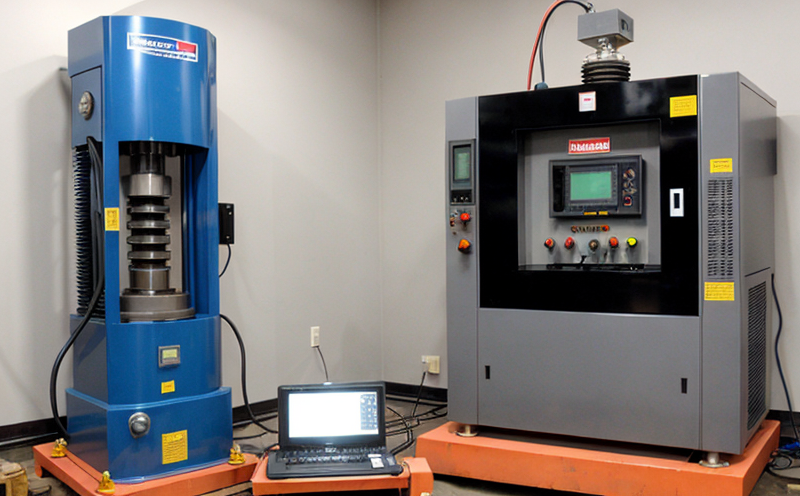EN 2591 403 Vibration Test for Aerospace Connectors
The EN 2591:2013 standard, specifically Clause 403, provides a comprehensive framework for the vibration testing of aerospace connectors. This service ensures that connectors meet stringent reliability and performance requirements under dynamic environments encountered during flight operations. The primary goal is to verify that connectors maintain their functionality and integrity when subjected to severe mechanical shocks and vibrations, which are inherent in various phases of aircraft operation.
The test methodology involves the use of a shaker system capable of generating precise frequency sweeps over a specified range. Specimens are mounted on a compliant support to simulate real-world conditions accurately. The standard specifies vibration levels based on environmental factors such as altitude, temperature, and operational phases (e.g., takeoff, cruise, landing). Compliance with these parameters is critical for ensuring that connectors perform reliably under the most challenging conditions.
The testing process begins with thorough specimen preparation, which includes cleaning, inspection, and marking according to predefined protocols. Once prepared, the connector is mounted onto a vibration test fixture. The fixture ensures accurate positioning of the specimen relative to the shaker system. The test procedure involves subjecting the connector to cyclic sinusoidal vibrations across a defined frequency range and amplitude envelope.
The acceptance criteria for this test are based on predefined performance metrics such as contact resistance, insulation resistance, and mechanical integrity checks. These metrics are critical in assessing whether the connector can withstand the specified vibration levels without degrading its electrical or physical properties. After completion of the test cycle, additional inspections are conducted to ensure that no damage has been inflicted upon the specimen.
The results from this testing process provide valuable insights into the robustness and durability of aerospace connectors. This information is invaluable for quality managers and compliance officers who need assurance that products meet regulatory requirements. For R&D engineers, this service offers a critical tool in optimizing design parameters to enhance performance and reliability. The data generated can also support procurement teams by providing specifications that ensure compatibility between different components within an aircraft.
| Test Parameters | Description |
|---|---|
| Vibration Frequency Range | From 10 Hz to 250 Hz |
| Vibration Amplitude | ±3 g peak-to-peak for 10 minutes at each frequency point |
| Test Duration | Each frequency point is held for 60 seconds |
| Temperature Range | -55°C to +125°C |
| Humidity Levels | 30% RH to 98% RH (optional, as per client request) |
Benefits
The EN 2591:2013 vibration test is essential for aerospace manufacturers and suppliers who must ensure the reliability of their products. By adhering to this standard, companies can enhance confidence in their offerings, thereby strengthening market position. Compliance with international standards such as EN 2591 ensures that products meet global regulatory requirements, facilitating smoother international trade.
The test process provides a robust framework for identifying potential weaknesses early in the development lifecycle of connectors. This allows manufacturers to address issues before product release, reducing costly rework and improving overall quality. For procurement teams, this service offers assurance that they are sourcing components from suppliers who meet stringent reliability standards.
From an engineering perspective, the test data provides valuable feedback on design improvements needed for future iterations of products. It also helps in understanding how different materials and structures behave under stress conditions, which is crucial for innovation within the aerospace industry. The insights gained contribute to safer and more efficient aircraft designs, ultimately benefiting passengers and operators alike.
Environmental and Sustainability Contributions
Reduces waste by ensuring that only robust components proceed to production stages.
Minimizes the risk of product failures in service, thereby reducing maintenance costs and downtime for aircraft operators.
Promotes the use of sustainable materials where possible through informed design choices based on test results.
Contributes to safer operations by enhancing reliability, which is crucial for environmental considerations related to flight safety.
The testing process itself contributes positively to sustainability efforts by reducing unnecessary production runs and ensuring that only high-quality connectors enter the supply chain. This leads to more efficient use of resources throughout the product lifecycle.





